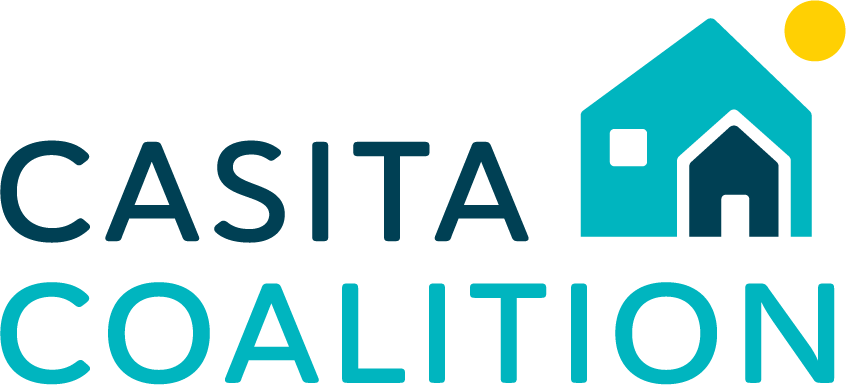Opening the Playbook: Top 5 Takeaways from 5 ADU/Middle Housing Reform Success Stories
We were thrilled to welcome this panel of ADU and middle housing leaders from across North America to share their success strategies at our July webinar. For more detail, watch the recording on our YouTube channel or check out the slides on our webinar library page.
Top 5 Promising Practices:
Build a broad coalition across political and other divides.
Talk to other ADU/middle housing reform advocates from cities/states that have been successful to speed learning and avoid pitfalls.
Tailor the messaging based on local values–and always center the human stories.
Raise awareness and gather supporters by offering tours and showing photos of appealing ADUs, ‘plexes, cottage courts and the happy people who live in them.
Passing statewide laws is essential, but prepare for the next barriers after zoning restrictions are removed.
5 Takeaways from Each Presenter:
Kol Peterson, Build Small Coalition, Accessory Dwelling Strategies
Portland, Oregon
Setting an urban growth boundary around the City of Portland set the stage for a positive attitude towards infill housing.
Public awareness campaigns and impact fee waivers were needed to jumpstart ADU production even after strong zoning reforms were in place.
ADU tours and classes were very effective in building support and demonstrating interest. The first citywide ADU tour in Portland sold out 800 tickets.
Cross-industry working groups helped identify barriers, draft initiatives and focus research needs.
Portland built on the success of ADUs with a residential infill project plan–in its first year, 42% of permitted housing units were middle housing units– 76% fourplexes; 13% duplexes; 23% second ADUs. Only 16% were single detached homes. Portland middle-scale homes are selling for avg of $117,000 less than a traditional median-size detached home.
Jake Fry, Build Small Coalition
Vancouver, British Columbia
A nonprofit coalition with expertise across sectors can provide technical assistance and thought leadership for government and industry, while raising public awareness.
Partnering with pro-housing municipalities doing innovative work supplied data and successful examples to share.
Surveying residents to understand their barriers to building ADUs was important for program/incentive development as well as messaging.
Sharing data on public approval (72% of residents see infill homes as an affordability solution) with elected officials boosted their confidence in supporting the issue.
For cities like Vancouver with limited available land and high median housing cost, ADUs and infill homes are a once–in-a-generation opportunity to unlock untapped wealth in properties and create opportunities for homeownership.
Denise Pinkston, Casita Coalition
California
Step-by-step incremental legislative changes using lessons learned from other regions was the successful strategy in California.
The messaging that reached the most people was: local control begins at home; no lifestyle veto from neighbors or government.
Statewide change is essential to create ecosystem transformation so the solution can scale to meet the need.
Zoning is just the first barrier. Only when that wall comes down do you see the others.
Finding common cause and building a broad coalition was essential to get the first statewide law passed, and remains essential for continued progress.
Anna Fahey, Sightline Institute
Washington State
In 2019, lifting zoning restrictions and removal of owner occupancy and parking requirements in Seattle caused ADU production to nearly quadruple.
Consistent outreach and education on the connection between a shortage of housing and the affordability crisis helped frame the public dialogue around why statewide zoning reform matters.
Show, don’t tell–make it about people–connect to top of mind stories and issues, from homelessness to climate change. The anti-sprawl message was particularly effective for a wide range of stakeholders, cutting across parties, rural-urban places, and issue areas.
Help people visualize solutions. Describe compact, walkable communities. Talk about homes, not units! And, show lots of photos of ADUs and middle housing--friendly, familiar, cute.
Build a broad coalition and reach across the aisle to find common ground. Washington state’s 2023 ADU and middle housing bills wouldn’t have passed without Republican votes.
Tanner Avery, Frontier Institute
Montana
Demonstrate the problem in an easily understandable way. Resources from the National Zoning Atlas showed how restrictive local zoning excludes low and middle-income residents and worsens the housing crisis.
Messaging focused on freedom, property rights and maintaining open space was most effective in this region.
PR efforts and paid ad campaigns gave voice to Montanans from the right, left and the business community to talk about why zoning matters to them.
Talking to other ADU policy leaders about their successful strategies and lessons learned helped in developing the Montana approach.
Bills allowing one ADU statewide, two homes/lot in larger cities passed and became state law. To avoid listing all standards separately, Montana law states that rules can’t be more restrictive for two homes on a lot than they are for a single detached home.
Special thanks to our host, Casita Coalition board member Jonathan Fearn, moderator Karen Chapple of the University of Toronto School of Cities and our presenters and panelists.
Casita Coalition webinars are made possible by the support of our major sponsors–Wells Fargo, the San Francisco Foundation and the Chan Zuckerberg Initiative–as well as our webinar sponsors, the California Building Industry Association, AARP California, the law offices of Allen Matkins, the law office of Reuben, Junius, & Rose; and the Building Industry Association of the Bay Area.
